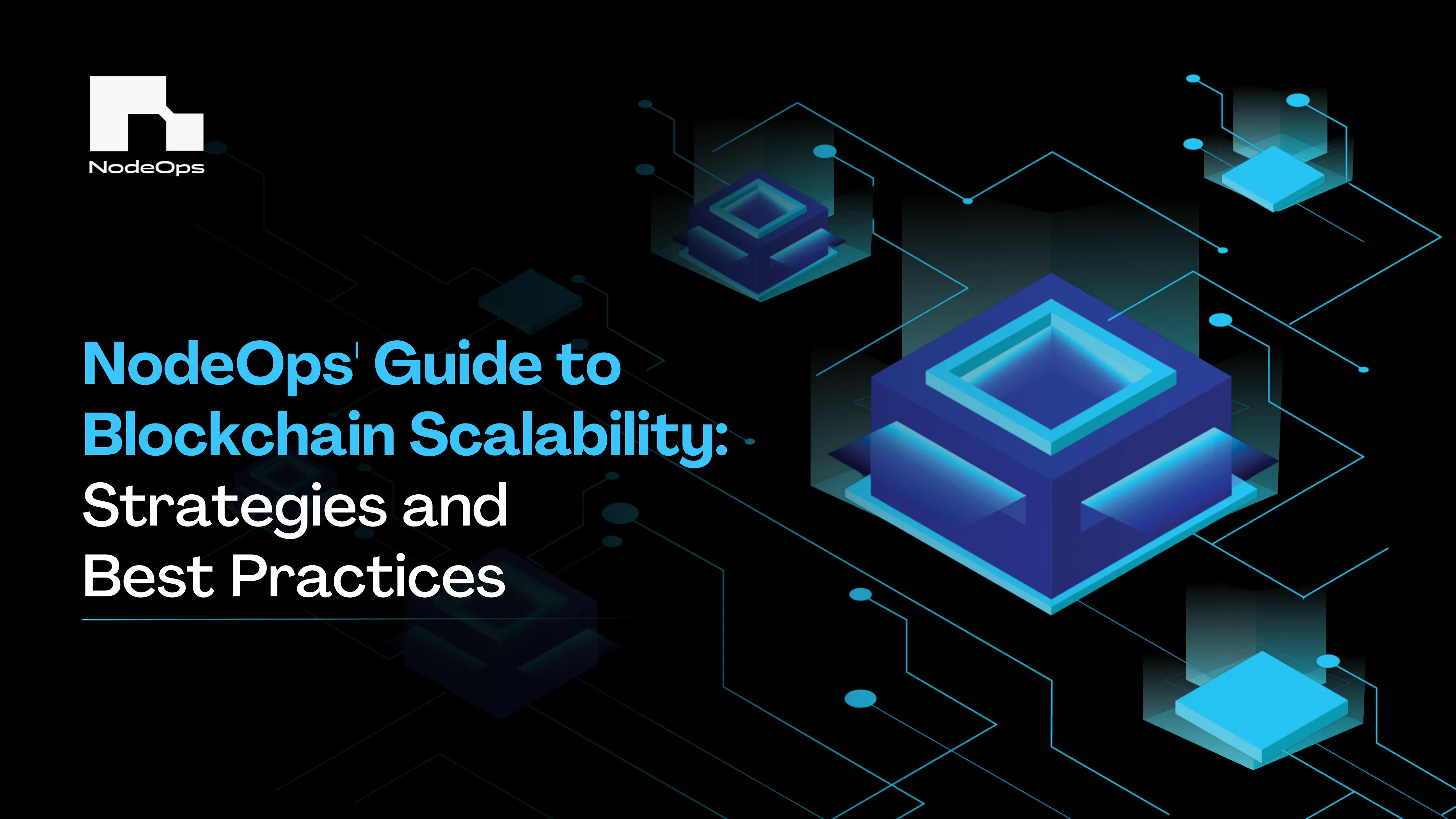NodeOps' Guide to Blockchain Scalability: Strategies and Best Practices
 NodeOps
NodeOps
With the rapid adoption of blockchain tech, blockchain networks are bound to get crowded, and lead to concerns about safety and security of crypto transactions. Many companies are already trying to improve the blockchain scalability issues to tackle all these challenges. In this article, we want to discuss the need for scalable blockchains, along with some of the best strategies and practices to implement across the ecosystem.
A Quick Brief on Blockchain Scalability
We all know what blockchain scalability means - it is the network’s ability to handle a massive number of crypto transactions without negatively impacting its performance or security. This approach matters significantly because blockchains have trouble dealing with the increasing number of users without scalability, which affects transaction fees and makes them more expensive.
Integrating scaling solutions is the key to enhance blockchain uptime and efficiency. With scalable solutions, blockchains can easily spread across various industries and make it more accessible to people.
The Need for Scalable Blockchain
The blockchain scalability trilemma is one of the main challenges for crypto. It is believed that blockchains can be great at two out of three things — being decentralized, scalable, and secure — but not all three. This means that when a network becomes easier to scale, it might have to give up some of its decentralization or security.
Source | The blockchain trilemma
Web3 and blockchain experts are testing to solve this trilemma without compromising on decentralization and security using improved scaling solutions in the growing ecosystem. We at NodeOps, are also trying to address these hurdles in our own innovative way through Atlas.
Blockchain Scalability: Best Strategies and Practices
Source | Blockchain scalability
We will now discuss some of the strategies and practices in detail which can be used to scale blockchains. Let us begin.
Layer 2 scaling
Layer 2 solutions play a key role in boosting blockchain scalability by handling transactions off-chain. This method reduces the data load on the main blockchain without compromising its security. Layer 2 is built on Layer 1, the main blockchain layer. Optimistic rollups, ZK-Rollups, side chains, and state channels fall under this category. Layer 1 and Layer 2 scaling solutions effectively address the key challenges of blockchain scalability.
Sharding
Sharding refers to splitting the blockchain into smaller units called shards. It allows multiple nodes to work on transactions simultaneously, which boosts overall performance through adjacent scaling. Each shard works independently to distribute data storage and process workload across the network. However, there are still many challenges concerning inter-shard engagement and security, which are being explored.
Consensus mechanism optimization
Choosing the best blockchain consensus mechanism is essential to boost transaction speed and reduce energy consumption. Proof-of-Stake (PoS) speeds up transactions by selecting validators based on their stake, making them more energy-efficient than Proof-of-Work (PoW). Delegated Proof-of-Stake (DPoS) further accelerates the process by choosing a small group of trusted nodes to validate crypto transactions. Other consensus algorithms include Proof-of-Authority (PoA), Proof-of-Reputation (PoR), Proof-of-Access (PoA), and Proof-of-Importance (PoI).
Increasing block size
A limited block size limits the rate of TPS. Increasing block size is one way to improve blockchain scalability and transactions. Bitcoin Cash (BCH) is the most popular example, as it has increased the transaction block size from 8MB to 32 MB, allowing around 116 TPS. Furthermore, Bitcoin SV (BSV) has increased the block size to 128MB, allowing 300 TPS.
The Bottomline on Blockchain Scalability Guide
The growth and adoption of blockchain tech are the main factors leading to network congestion and lower crypto transaction rates. But using strategies like sharding, Layer 2, increased blocked size, and opting for relevant consensus mechanisms can enhance blockchain scalability, security, and more TPS.
About NodeOps: NodeOps is the leading infrastructure marketplace for Web3, allowing anyone to purchase, deploy and manage a wide range of blockchain nodes. Our mission is to truly decentralize Web3. One node at a time. To achieve this, we are streamlining the entire node orchestration process and offer an easy-to-use platform for Web3 protocols, developers and retail users to manage all their operational needs. With Atlas—our permissionless, decentralized infrastructure orchestration layer built as an AVS on EigenLayer—we're setting new standards in ease, speed, and security for infrastructure management. We support over 45 chains, created 20,000+ NodeFolios, deployed 40,000+ nodes, and manage assets worth $50 million (AUM).
Join NodeOps today and deploy your first node at nodeops.xyz, or follow us on X for the latest news & updates.
Subscribe to my newsletter
Read articles from NodeOps directly inside your inbox. Subscribe to the newsletter, and don't miss out.
Written by
